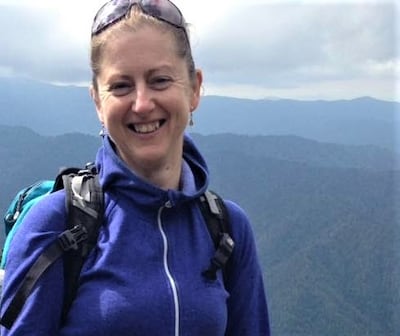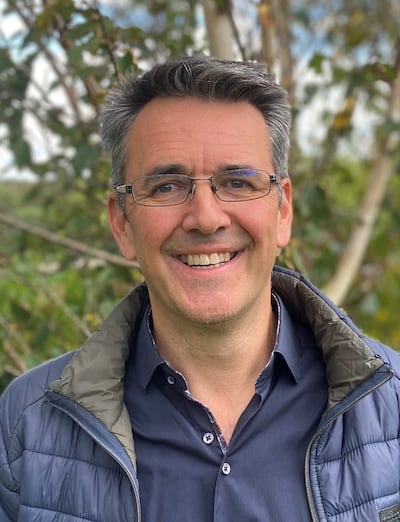This month will see the 26th UN Climate Change Conference of the Parties (Cop26) take place in Glasgow, Scotland, with world leaders coming together to tackle the climate crisis. But when it comes to climate change, we know now that we have to stop simply talking the talk - and walk the walk.
SSE Airtricity is part of the FTSE listed SSE Group, a principal partner of Cop26, and is focused on doing just that. Its efforts to bring 100 per cent green energy to homes and businesses across Ireland are embedded in the everyday activities of its people.
Carmel Brennan and John O’Sullivan are environmental advisors with SSE. They spoke to us about the sustainability endeavours that underpin their everyday work and the far-reaching impact they hope they will have.
Carmel Brennan: “We need to look at how we can make the biodiversity value of wind farm sites even better”

Carmel Brennan’s work centres on sustainability and embodies the message that working on wind farms isn’t all about spanners and hammers.
“As environmental advisors, essentially our job is to ensure best practice in ecological and environmental management on our wind farm sites. Biodiversity is just another name for nature; SSE’s wind farms are located predominantly in upland areas on the west, south and north coast, and these are areas that are rich in biodiversity.
“Each wind farm comes with environmental management plans and our job is to implement best practice on those wind farms. Our goal is to protect the biodiversity there and reinstate any of the habitats that were lost during construction – as well as enhancing what is already there over the lifetime of the wind farm.
“One example is the All-Ireland Pollinator Plan, which we signed up to as business supporters. In the peatland areas where our wind farms are located, we work in partnership with farmers to reduce grazing pressure and encourage lots of heather and wildflowers through low intensity agriculture.
“We are reducing or completely eliminating herbicides around wind farm infrastructure on site, and we ensure there are areas where the bees can nest by providing habitats for them.
“Recently we became involved in a research project with Trinity College Dublin on how to develop best practice in biodiversity at our wind farms. Wind energy in Ireland is about 30 years old and it’s at a stage where it is more mature, so we need to look at the results we have so far, and look at how we can make the biodiversity value of these wind farm sites even better.
“There is a biodiversity crisis as well as a climate crisis and ultimately they are two very interrelated problems, so we have got two big jobs ahead of us. Wind farms can offer solutions to both of those problems.
“By protecting and preserving these sites, we can help sequester carbon, and can help store and attenuate water from extreme weather events. They are multifunctional - they are not only protecting the nature on site but helping to ameliorate climate change.
“We are running out of time; from the biodiversity viewpoint, our environmental strategy is to achieve biodiversity net gain on all our new wind farms by 2025 and look at the wider range of ecosystem benefits they offer. We are at the point now where the next 10 years is going to be critical for both the climate change agenda and the biodiversity agenda. Everybody has to put their shoulder to the wheel and make those changes and influence others around them.”
John O’Sullivan: “The Galway Wind Park was designed and constructed to the highest of environmental standards”

John O’Sullivan was centrally involved in the development of the Galway Wind Park.
“Galway Wind Park is the largest onshore wind farm in the country. It opened in 2017, but a massive project like that doesn’t happen overnight; it took ten years of planning and extensive consultation with the local community, as well as statutory bodies.
“It was done in a very delicate manner, taking into account the specific environmental sensitivities; for example, there was a protected species called the freshwater pearl mussel and essentially we decided not to put any turbines in that river catchment at all, even though the risk was very small.
“SSE has 28 wind farms on the island of Ireland that generate more than 700MW of green energy, while Galway Wind Park alone generates 170MW. It was designed and constructed to the highest of environmental standards and we felt it was important to educate not only our colleagues, but also the public, on what we did to achieve that.”
“Galway Wind Park is much more than a wind farm; here we welcome the public and developed the Galway Wind Way with the community. This consists of 47 km of marked walking and cycling trails – including a designated wheelchair/buggy route.
“The local community also helped develop an interpretative education centre spread throughout the park that tells people all about the species such as the Kerry slug and the birds that come to winter here, about the cultural heritage of the area and the turbine technology used.
“Our community fund is a key aspect of bringing a meaningful benefit to the community through third level scholarships, major infrastructure and smaller local projects.
“We have learned that by having a strong environmental team and leaders in these roles, we can influence people across the entire organisation and beyond. It’s about education and outreach, and through this awareness we build appreciation – and this leads people to take action to help the environment.”
Discover more about SSE Airtricity’s sustainability commitments at sseairtricity.com









